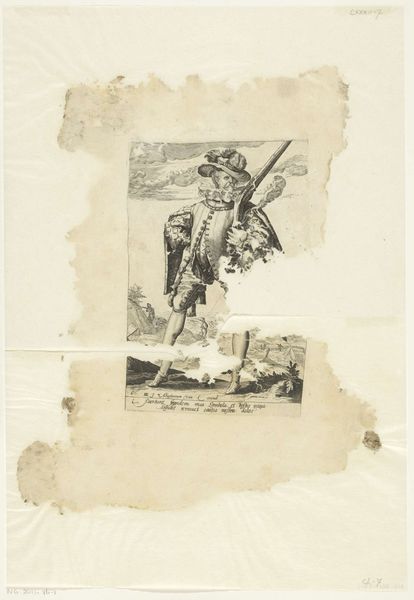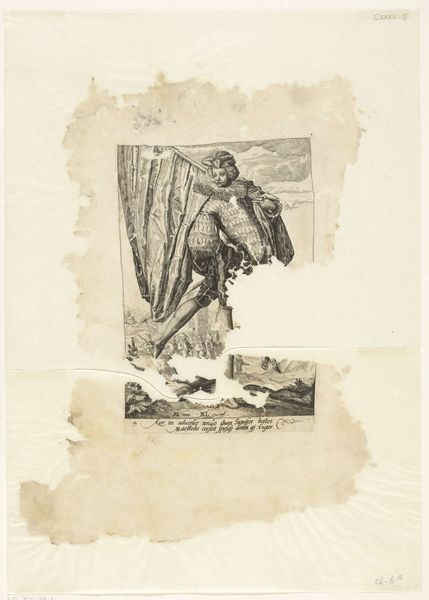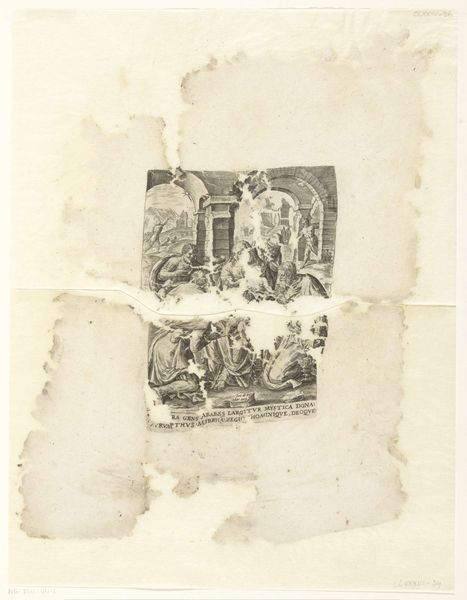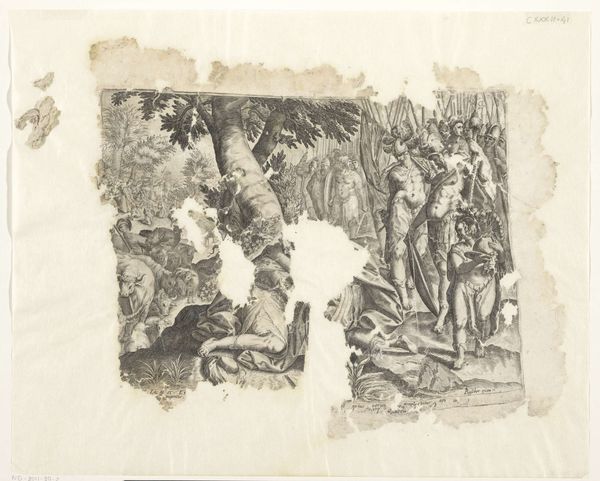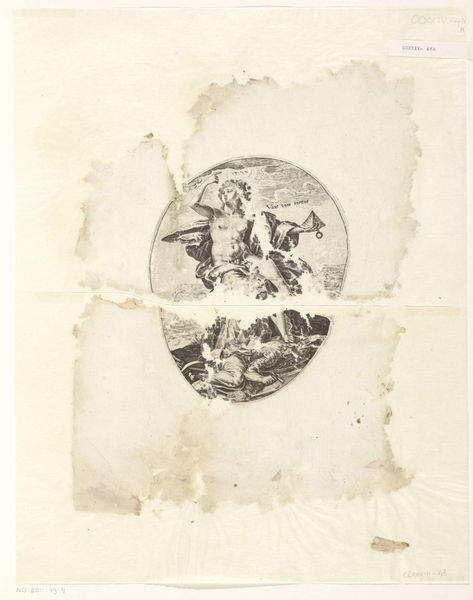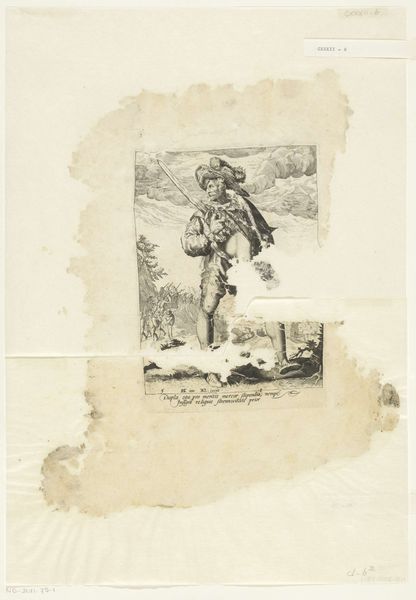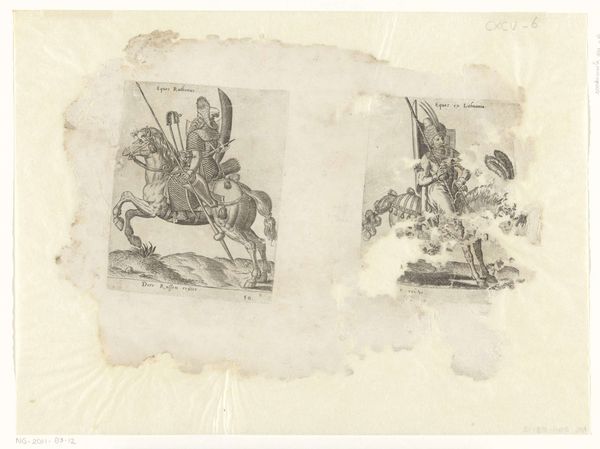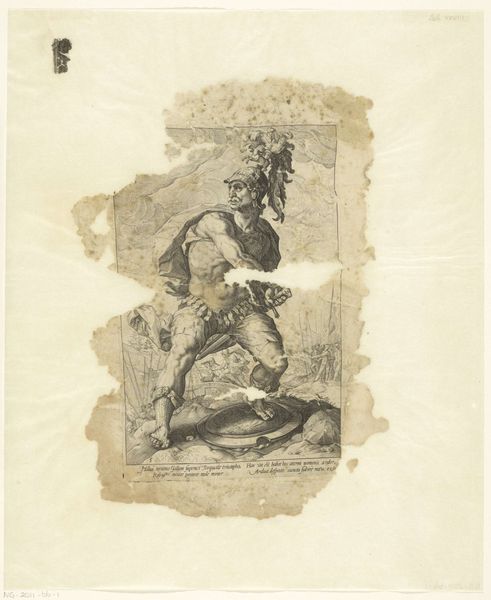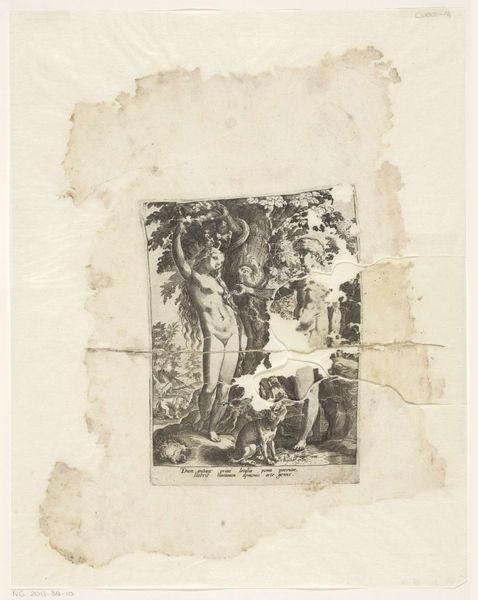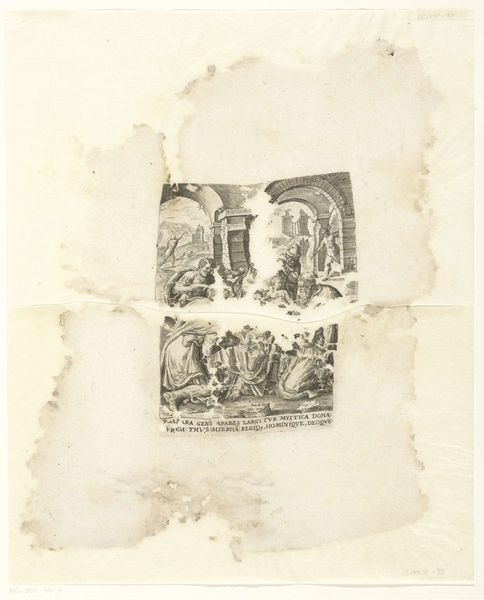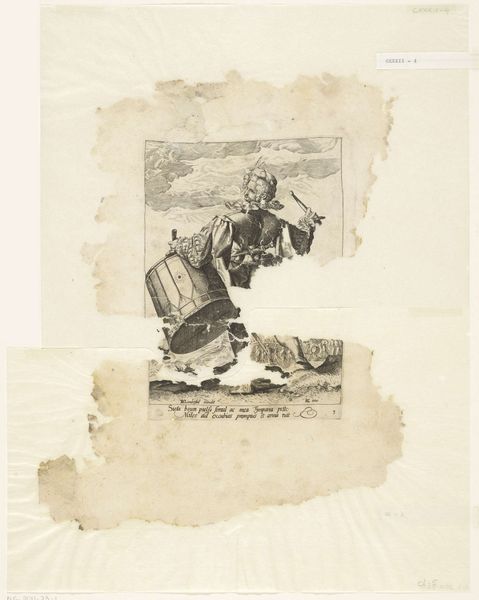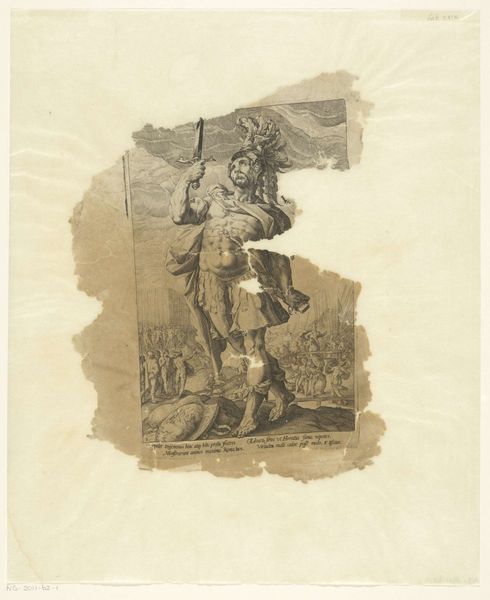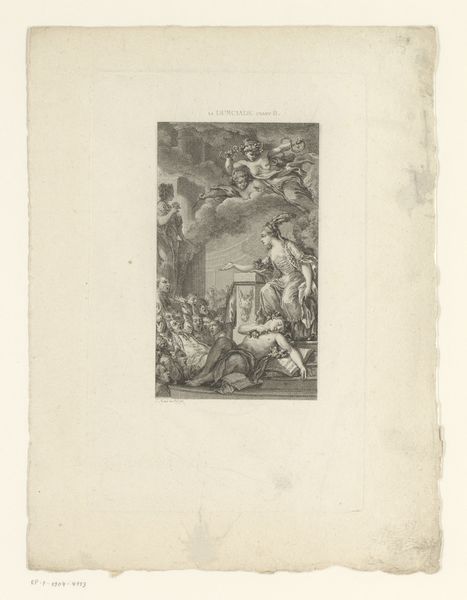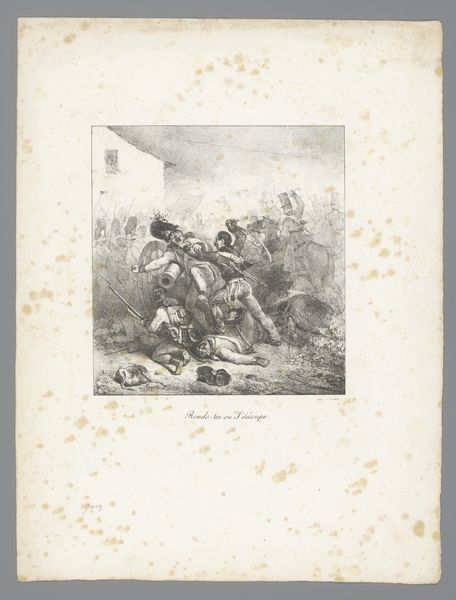
#
light pencil work
#
pencil sketch
#
old engraving style
#
incomplete sketchy
#
sketchbook drawing
#
watercolour bleed
#
pencil work
#
watercolour illustration
#
sketchbook art
#
watercolor
Dimensions: height 316 mm, width 218 mm
Copyright: Rijks Museum: Open Domain
Editor: So this delicate drawing, "Allegorie met Faam en Historie," made between 1586 and 1596 by an anonymous artist, depicts a rather dramatic scene in watercolor. It feels almost theatrical. What do you see in this piece? Curator: What immediately strikes me is the piece's overt celebration of the relationship between fame, history, and artistic creation. Considering the historical context, the late 16th century saw the rise of humanist ideals and the growing importance of historical documentation. Does the figure blowing the horn, who you’ve recognised as the Fama, herald and almost certify an immortal glory? Editor: Yes, it definitely looks like Fame is making an announcement! And there’s also that figure writing… is that supposed to be History then? What does this dynamic tell us about the social role of art at the time? Curator: It suggests that art served a crucial role in shaping historical narratives. Look at how History is literally recording events – but seemingly inspired or directed by Fame. This implies art was not merely a passive reflection of events, but an active participant in constructing how those events would be remembered and understood. Who commissions it, shapes it. Does that give the "Fama" –the one making an announcement– political influence in this work, do you think? Editor: I hadn't thought about the commissioning aspect, that's interesting! So the drawing is really arguing for the artist's role as not just a craftsman, but almost as a historian shaping public perception. Curator: Exactly! This interplay reminds us that artistic production during this era wasn’t isolated. Instead it was intrinsically linked to power dynamics, cultural values, and the very construction of collective memory. It almost forces us to ask, which stories get told and who gets to tell them, or commission to be told. Editor: That gives me a new way of considering not just art from this era, but its legacy. Curator: Precisely, by interrogating images like this, we get insights into the social forces that molded the art world and how art continues to reflect and shape history even today.
Comments
No comments
Be the first to comment and join the conversation on the ultimate creative platform.
